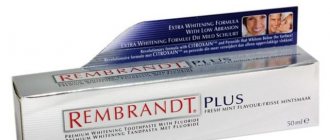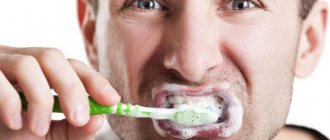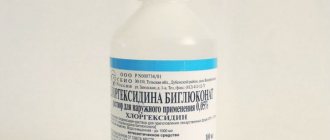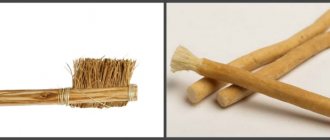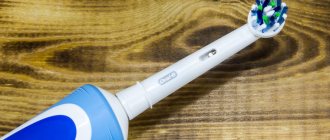A snow-white and dazzling smile not only attracts the attention of others, but also indicates the health of the oral cavity. Emerging inflammatory processes in the oral cavity, in particular the gums, are accompanied by bad breath, redness of the mucous membrane, and also lead to a possible risk of tooth loss or psychological trauma. Modern medicine and the range of medications offered will make it possible to get rid of this unpleasant pathology quite quickly and painlessly. But how to organize gum treatment at home? And how to treat gums? We will try to answer these and many other questions in the article.
Causes of gum inflammation in adults
To date, a fairly large number of factors have been identified that contribute to the development of inflammatory processes in the oral cavity:
- reaction to taking medications;
- hormonal imbalance in the body;
- the presence, course or development of infections in the body;
- diabetes;
- diseases affecting the gastrointestinal tract;
- cardiovascular diseases;
- crowns and fillings of questionable or poor quality;
- deficiency in the body of macro and microelements, as well as vitamins and minerals;
- presence of bad habits, especially smoking;
- genetic predisposition;
- inadequate level of oral hygiene;
- caries;
- against the background of a weakened immune system.
As for diseases that affect the oral cavity and contribute to the development of inflammatory processes, these include:
- Periodontal disease is a pathology, the course of which is accompanied by damage to the periodontal tissues. Refers to sluggish ailments.
- Periodontitis is inflammation of the periodontium or periodontal matter. Develops as a result of infection entering the oral cavity during prosthetics or dental trauma. The disease develops quite quickly and rapidly.
- Ginginitis is a pathology accompanied by inflammation of the mucous membranes of the oral cavity. As a rule, it appears during hormonal changes in pregnant women, as well as in the presence of irritation of the gums by the crown.
- Periodontitis is a pathology that is accompanied by the development of an inflammatory process between the bone bed and the tooth. Occurs in most cases against the background of untreated pulpitis.
How to properly treat gums
It is necessary to heal the mucous membrane and teeth of the oral cavity by constantly rinsing with various medicinal or herbal solutions, infusions or decoctions. It is recommended to carry out manipulation as follows:
- in the morning after waking up;
- no less than an hour before meals;
- immediately after a meal;
- before bedtime;
- based on the patient’s physical well-being.
How to remove flux during inflammation
To alleviate symptoms, dentists often recommend resorting to folk remedies:
- Sage decoction: pour 250 ml of boiling water into 1 tablespoon of the plant, boil for three minutes, then let it brew for at least half an hour, filter and rinse at intervals of 20 minutes for three hours.
- Soda solution: pour 1 teaspoon of soda into 200 ml of boiling water, wait until the resulting solution cools down and rinse the mouth with it every three hours.
Inflammation of the gums with sore throat
Sore throat is accompanied by the expression of the following main symptoms:
- the formation of a whitish coating on the gums, which contributes to the loosening of teeth;
- excessive salivation, swelling of the gums;
- discomfort while using the speech apparatus and eating;
- unpleasant odor from the mouth;
- general state of malaise;
- increased body temperature;
- redness and inflammation of the mucous membranes of the mouth.
First of all, it is necessary to suppress the manifestation of sore throat symptoms, and then begin to treat inflamed gums. The course of therapy must be carried out under the supervision of a physician.
Purulent inflammation of the oral cavity
If this pathology occurs, it is recommended to immediately visit the dental office. It is possible that you will need to resort to surgery.
Conservative therapy includes:
- Removing a filling or crown.
- Removal of tissues affected by caries.
- Nerve removal.
- Expansion of root canals.
- Treatment of enlarged canals with antiseptics.
- Taking antibiotics.
- A month later, the dentist places a new crown or filling.
At home, you can resort to using the following method: rinsing the mouth with a solution of hydrogen peroxide (3%) and water in a ratio of 1 × 1.
For a cold
The main symptoms of gum inflammation due to a cold are swelling, swelling, redness of the mouth, and acute toothache. Therapeutic therapy involves the removal of tissues that have been affected by purulent formations. If the toothache is accompanied by a cough or fever, then most likely it will go away on its own in a couple of days.
Inflammation of the gums under the crown
The therapeutic course includes a set of the following activities:
- Regular gum massage.
- Eating solid foods such as nuts, carrots, apples, etc.
- Introducing foods enriched with vitamin C into the diet.
- Using dental floss during daily hygiene procedures.
- Tartar cleaning.
- Taking analgesic medications, for example: Paracetamol, Tempalgin.
- Regular rinsing of the mouth with antiseptic solutions, for example: Chlorhexidine, Miramistin, Furacilin.
- If bleeding occurs, it is necessary to use Solcoseryl or Metrogyl gels.
After tooth extraction
Inflammation of the gums after therapeutic treatment of a tooth is a natural physiological reaction of the body to improper treatment or taking a drug. The vast majority of drugs have contraindications and side effects that should be observed before starting use. An incorrectly selected drug can cause irritation of the oral mucosa, which contributes to inflammation.
The cause of inflammation can also be the patient’s negligent attitude to all the dentist’s instructions. If you follow all the proper rules during rehabilitation, you can prevent the development of unpleasant consequences.
Why do teeth and gums hurt when you have a sore throat?
Sore throat, or acute tonsillitis , is an acute infectious disease of the whole body with a predominant lesion of the palatine tonsils. The palatine tonsils are most often affected, but the infection can also affect other accumulations of lymphatic tissue of the pharynx and larynx, then we can talk about lingual, laryngeal or nasopharyngeal sore throat. Infection of a person can be from the environment or bacteria located inside the body.
There are 2 ways of transmission of infection: - airborne; - with food. Infection occurs from the oral cavity or pharynx (chronic inflammation of the tonsils, carious teeth, etc.). The source of infection can be purulent diseases of the nose and paranasal sinuses.
Staphylococcus is the most common causative agent of sore throat; infection can also be caused by streptococcus and pneumococcus. Perhaps there are viral sore throats. Sore throat occurs after exposure to predisposing factors along with the penetration of the pathogen. Such factors include local and general cooling, decreased reactivity of the body. Most often, children of preschool and school age and adults under 35-40 years old suffer from tonsillitis, especially in the autumn and spring periods. There are catarrhal, follicular and lacunar forms of tonsillitis.
The first symptom of any form of sore throat is pain when swallowing, then malaise and fever appear. The patient suffers from joint pain, headache, and periodic chills. Depending on the form of angina, the duration of the disease and local changes in the palatine tonsils change. With adequate and rational treatment, angina lasts 5-7 days.
Catarrhal sore throat begins acutely, suddenly and is accompanied by sore throat, mild sore throat, general malaise, and fever. Moderate swelling and redness of the palatine tonsils and palatine arches are noted; the soft palate and posterior wall of the pharynx are unchanged. The peripharyngeal lymph nodes may be enlarged and painful when palpated. A sore throat can only begin with a catarrhal form, and then move to another stage, or be one of the manifestations of another infectious disease.
With the development of lacunar and follicular tonsillitis, a more pronounced clinical picture is created. Often the disease begins with chills, a rise in temperature to 38-39 ° C and higher, children are especially susceptible to these forms. Headache, sore throat, malaise, and general weakness appear. These forms of angina are characterized by changes in the blood. The cervical lymph nodes become enlarged and are painful to touch. When examining the pharynx, pronounced redness and swelling of the palatine tonsils and nearby areas of the soft palate and palatine arches are noted. With follicular angina, festering follicles are visible, visible through the mucous membrane in the form of small yellow-white bubbles. With lacunar angina, yellowish-white plaques form, but they are localized at the mouths of the lacunae. These plaques can subsequently merge with each other, covering the entire or almost the entire free surface of the tonsils, but they are easily removed with a spatula.
If left untreated, purulent inflammation of the tissue around the tonsils, or phlegmonous tonsillitis, may occur. More often, phlegmonous tonsillitis is a complication of one of the forms described above and develops 1-2 days after the main process has ended. More often, purulent inflammation is located only on one side. With phlegmonous sore throat, there is a sharp pain in the throat when swallowing, headache, chills, a feeling of weakness, weakness, nasal speech, trismus of the masticatory muscles, an increase in body temperature to 38-39 ° C, bad breath, and copious salivation. The cervical lymph nodes are also significantly enlarged and painful to touch. The soft palate on one side becomes very swollen and red. The palatine tonsil on this side is displaced towards the midline and downwards. If treatment for phlegmonous tonsillitis is not started, then after a few days an abscess will form around the tonsil tissue. The abscess may be visible through the thinned mucous membrane. An abscess requires only surgical treatment.
Sore throats can be complicated by rheumatism, cholecystitis, orchitis, meningitis, nephritis, etc. In addition to an abscess, phlegmonous tonsillitis can cause acute and otitis media, acute laryngitis, laryngeal edema, and phlegmon (diffuse purulent inflammation) of the neck.
For the purpose of prevention, the patient is placed in a separate room, it is often ventilated and wet cleaned. Special dishes are provided, which are boiled or scalded with boiling water after each use. A vessel with a disinfectant solution is placed near the patient’s bed to spit out saliva. Limit the patient's contact with people around him, especially with children, who are most susceptible to sore throat. To prevent a sore throat, it is important to timely and completely cure local foci of infection (carious teeth, chronically inflamed tonsils, purulent lesions of the paranasal sinuses, etc.), and eliminate the causes that make it difficult to breathe freely through the nose (in children, these are most often adenoids). Of great importance are hardening the body, proper work and rest regime, and the elimination of various hazards - dust, smoke (including tobacco), excessively dry air, alcohol, etc.
Treatment of sore throat must be agreed with a doctor. In some cases, the use of antibiotics . But they cause many complications and undesirable effects, which cannot be said about the drugs given to us by nature itself.
Various rinses containing birch tar can be used locally. Rinsing is carried out with warm decoctions of sage or chamomile with the addition of a few drops of birch tar.
You can use an aqueous solution of tar : 10 drops per 50 g of warm, boiled water. It makes sense to use a solution of table salt, soda and potassium permanganate as a rinse. Rinsing is done after eating.
A good effect is observed if an anti-inflammatory mixture in the following recipe: birch tar - 5 tbsp. l., St. John's wort (herb) - 2 tbsp. l.; common oak (bark) - 2 tbsp. l.; stinging nettle (leaves) - 1 tbsp. l.; tansy (flowers) - 1 tbsp. l.; Scots pine (buds) - 1 tbsp. l.; naked licorice (roots) - 2 tbsp; buckwheat (grass) -1 tbsp. l.. 2 tbsp. l. The mixture is brewed in 1 cup of boiling water, infused for 15-20 minutes, birch tar is added, mixed thoroughly, filtered through a double layer of gauze, squeezed lightly, cooled for 30-45 minutes. Use as a warm rinse, 1/2-1/3 cup several times a day. 1/3 cup can be taken orally warm in the morning and evening.
Treating gum inflammation at home
Sore gums, how to treat them at home? In order for treatment with traditional methods at home to bring the desired effect, you must first consult with your dentist to determine whether the chosen treatment method is suitable for you. According to these statistics, due to improper oral care, more and more people are complaining of oral inflammation and pain. The development of this pathology is due to poor ecology, vitamin deficiency, constant stress and heavy workload, and poor nutrition. But how can we help our gums so that they don’t hurt or become inflamed? Nessesary to use:
- Garlic . Everyone knows that garlic is a plant-derived antibiotic. To prevent the development of infection due to gum inflammation, you need to eat at least 3 cloves of garlic during the day or take it in the form of dietary supplements.
- Sea buckthorn oil is extremely in demand in dentistry for the treatment of inflamed gums, since it has a wound-healing effect. A gauze or cotton swab is generously moistened in sea buckthorn oil, after which it is applied to the inflamed areas of the oral mucosa. You can also rub sea buckthorn oil into inflamed areas with your finger.
- Hydrogen peroxide . If your gums bleed profusely, you can use hydrogen peroxide (6%). In a ratio of 1×1, it must be diluted with water, then rinse the mouth several times during the day. To achieve the desired effect, it is necessary to carry out manipulations for at least five days in a row.
- Oak bark is an excellent anti-inflammatory agent that perfectly helps to cope with oral problems at home, and also eliminates pain if your teeth hurt. Two tablespoons of oak bark need to be poured into 500 ml of boiling water. The resulting solution must be simmered on fire for at least ten minutes, then left to infuse until warm. The oral cavity must be rinsed at least three times during the day. At least 150 mg of decoction should be used each time.
- The herbal mixture perfectly eliminates pain and inhibits inflammatory processes. To prepare the solution, you need to prepare a tablespoon of strawberry leaves, black elderberry and St. John's wort flowers for two glasses of water. The solution must be simmered over low heat for ten minutes, then left under the lid for at least half an hour. You can rinse your mouth with the resulting solution every hour.
- Aloe leaves are an excellent product of natural origin that perfectly treats inflammatory processes. But it is worth noting that aloe leaves that are three years old are used for medicinal purposes. The thorny parts of the plant should be removed, and the leaf itself should be cut lengthwise with a knife. It is enough to apply half a leaf to the inflamed areas of the mucous membrane. This manipulation can be carried out at least seven times during the day.
- Sea salt has always been actively used in folk medicine; its beneficial properties have long been appreciated. You need to dissolve a little sea salt in a glass of purified water; after it is completely dissolved, you can rinse your mouth. The manipulation can be repeated up to three times a day. An alternative to rinsing is to simply rub salt into the affected areas. It is this salt that can reduce bleeding and relieve inflammation. Harmful bacteria react with sea salt and die.
- Baking soda is actively used to rinse the mouth. In a glass of boiled warm or cooled water, you need to dissolve half a teaspoon of soda and a quarter of sage tincture. It is recommended to rinse the gums with the resulting decoction at intervals of half an hour.
- Plantain is excellent in reducing bleeding gums and fighting inflammation. In summer you can use fresh leaves, and in winter you can use dried leaves. Simply chewing them is enough.
- To use sage , you need to prepare an infusion consisting of 1 tablespoon of sage in half a glass of boiling water, let the infusion brew for an hour under the lid, then strain. The resulting drink not only has a pleasant aroma, but also tastes a little sticky in the mouth. It is recommended to rinse your mouth several times during the day after eating, preferably until complete recovery occurs.
Gargling with toothpaste for a sore throat
ABOUT WHAT DOES NOT BREAK FAST
Eating, drinking and sexual intercourse due to forgetfulness
It is reported from Abu Hurayrah (may Allah be pleased with him) that the Prophet (peace and blessings of Allah be upon him) said: “The fast of one who forgets to eat or drink is not broken, for truly it was Allah who fed and gave him something to drink.” al-Bukhari 1933, Muslim 2/171. Most scholars relied on this hadith, and only Imam Malik believed that this injunction applies only to voluntary fasting. However, his opinion is not acceptable since another hadith clearly and clearly states that we are talking about the fast of Ramadan. The Messenger of Allah (peace and blessings of Allah be upon him) said: “If a person forgetfully ate on the fasting day of the month of Ramadan, then he should neither make up for this day nor perform expiatory actions.” al-Hakim 1/420, ad-Darakutni 2/178. The authenticity of the hadith was confirmed by Imam al-Hakim, al-Bayhaqi, Hafiz al-Zahabi, Imam al-Nawawi, Hafiz Ibn Hajar and Sheikh al-Albani. If anyone sees someone who is eating or drinking out of forgetfulness, he is obliged to stop him and remind him that he is fasting, since the Prophet (peace and blessings of Allaah be upon him) said: “Let the one of you who sees something blameworthy will change it." Muslim 1/78. Hasan al-Basri and Mujahid said: “Whoever commits sexual intercourse out of forgetfulness should not make any compensation.” See “Sahih al-Bukhari” 1/452.
Treatment of gums in children
To prevent the development of complications in children with gum inflammation, they should be taken to the dental office for an examination. Complex therapy is prescribed based on age, ongoing symptoms of the disease and the individual characteristics of the child’s fragile body:
- For infants during teething, Kamistad gel, Dental and homeopathic medicine Dentakids help relieve unpleasant symptoms and eliminate pain.
- For children who have reached an older age, it is recommended to rinse the mouth with decoctions of medicinal herbs or pharmaceutical preparations.
All methods have antiseptic properties that relieve inflammation.
Prevention of such violations
Basic methods of prevention:
- Every day, brush your teeth after waking up and before going to bed, carefully remove food debris from their base, use dental floss, and rinse your mouth after eating.
- Eat foods high in calcium, introduce more fiber, fruits and vegetables into your diet. Eating less sweets and meat products, which are bad for the “well-being” of the gums.
- Avoid stressful situations, relax more, walk in the fresh air, and lead a healthy lifestyle.
- Massage the gums daily, rinse with decoctions of medicinal herbs.
- Stop smoking and give up alcohol - these factors negatively affect the functioning of all systems of the human body.
- Change toothbrushes as the bristles wear out, preferring electric ones. They cope better with plaque and at the same time massage the gums.
- Brush not only your teeth, but also your tongue, which is the habitat for bacteria that enter the oral cavity.
- When the first signs of gum inflammation appear, immediately begin treatment, consult a dentist and use only proven methods of healing the body.
Toothpaste for gum disease
For inflamed gums, it is important to choose the right paste that helps eliminate unpleasant symptoms. The most popular today are:
- Lacalut Aktiv (reduces bleeding, removes plaque, reduces loose gums);
- Parodontax Classic (to prevent inflammation and bleeding);
- Blend-a-med Complex 7 (helps strengthen gums, prevents inflammation and the appearance of tartar);
- Blend-a-med Pro-Expert (has a protective function, reduces inflammatory processes).
Proper treatment of gum disease is effective at home. With its help, you can not only eliminate inflammation and bleeding, but also improve the health of the entire oral cavity.
How to treat gum disease with antibiotics
If all of the above treatment methods do not give the desired result, and the inflammation intensifies, then after washing out the purulent accumulations, the doctor prescribes the patient to take antibiotics. In most cases, Metronidazole is prescribed 500 mg 3 times a day, the duration of treatment is two weeks, and other drugs can also be used, but only after being prescribed by a dentist.
When treating severe gum inflammation at home, it is recommended to use various gels, balms and ointments of domestic and foreign production.
- Forest balm gum cream.
- Balm Asepta.
- Gel Cholisap.
All of the above drugs are highly effective, which within a short period of time relieve bleeding, pain, inflammation, and also prevent the development of pathogenic microorganisms and have regenerative properties.
It is worth noting that anti-inflammatory drugs in the form of gels are more effective than ointments.
The fatty base of each ointment does not allow it to adhere well to the mucous membrane, so most of the product used enters the body along with saliva.
Prevention of gum inflammation
- When identifying the first signs of inflammatory processes in the oral cavity, it is necessary to begin treatment as soon as possible and visit a dentist who will prescribe appropriate therapy.
- It is necessary to brush not only your teeth, but also the surface of your tongue, on which a huge number of pathogenic bacteria develop and multiply.
- It is necessary to change your toothbrush at least once every three months. It is highly recommended to choose electric toothbrushes.
- It is necessary to give up bad habits that have a detrimental effect on your health.
- Every day, rinse your mouth with medicinal decoctions and massage your gums.
- Give preference to a healthy and active lifestyle, avoiding stressful situations.
- Give preference to products that contain large amounts of calcium and fiber. Minimize the consumption of sweets and meat products.
Inflammation of the gums with sore throat: why does it occur and how to treat it?
Sore throat is an infectious disease of inflammatory nature, often developing as a complication of acute respiratory diseases. As a result, the mucous membranes and other parts of the upper respiratory tract are often affected. Often pathogenic microorganisms that cause inflammation in the pharynx penetrate into the oral cavity, where they cause other local and systemic manifestations.
How to understand that your gums are inflamed with a sore throat?
Inflammation of the gums during a cold manifests itself in the form of gingivitis or stomatitis and is accompanied by a whole range of symptoms. With a simple examination, it is easy to notice and highlight such manifestations as:
- Redness, swelling of the mucous membrane of the gums, mouth, pharynx;
- Increased sensitivity of the mucous membrane, pain, manifested when swallowing, chewing, and sometimes during conversation;
- Swelling of the gums;
- Increased salivation.
Systemic symptoms may also include general malaise, fever, nausea, and headaches. With a longer course of the disease, the formation of white or
a grayish coating on the surface of the gums and a sharp, unpleasant odor from the mouth. Bleeding may occur, especially if the mucous membrane of the gums is damaged when brushing your teeth or while eating.


